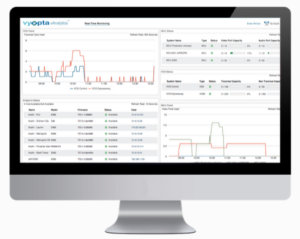In the video collaboration space these days, there is no room for miscalculation. Video and unified communications administrators need clear explanations and hard data to make enterprise network improvements in today’s rapid expansion of video. Here are 5 best practices you can start with to tidy things up a bit, and improve your return on video investments.
#1 Prepare for growth
What we’ve experienced in the last couple of years with the number of users and video minutes can be defined as explosive growth. But growth comes with it’s costs. The more organizations integrate video into their daily operations, the more video minutes rack up, and the more stress it puts on enterprise networks.
In this article titled “Video Chat Use Upside” video call minute projections for 2015 totaled up to over 550 billion minutes, with number of users expected to reach over 16 million. While I don’t have the exact number of total video minutes to this day on hand, I think it’s safe to say that with WebRTC and the expansion of other software clients in the enterprise – this ballpark estimate is not far from reality.
How do you prepare for his kind of growth? For scaling enterprise video collaboration, back of the envelope projections will not be sufficient. Collaboration analytics will become an absolute necessity.
#2 Avoid over-spending on bridge resources
With growth, comes the need to streamline video assets and become more proactive about planning to take on more users. Every organization has different video conferencing needs, so video usage trends need to be monitored for individual systems.
To avoid overspending on bridge resources you’ll need insights into your MCU’s and VMR’s such as meeting duration, call frequency, and quality, and participants.
Check out Cimpress, for example. They are a global mass customization company who saved over $160,000 in infrastructure resources with data and insights from analytics.
#3 Improve utilization of video assets
In order to improve utilization of your video environment, it will take some analysis on your part. You’ll need insight into underutilized systems and a comparison of hardware and software endpoints to get to the heart of what drives utilization in your organization.
Managers can now get powerful business intelligence about their usage that can then be used to create targeted policies to help drive growth and increased workforce productivity across the organization with collaboration analytics.
#4 Beware of licensing restrictions
Traversal and non-traversal call licenses are notoriously complex with some video environments. For enterprises, this is a critical metric that must be monitored in real time as well as with historical reports.
You need to know if you’re getting dangerously close to the call license limit before you hit 100% capacity. Real time monitoring and alerts can help IT become more proactive about avoiding issues that stem from call license oversight.
#5 Deliver quality service from end-to-end
Visibility is critical, in order to deliver quality service. A complete view of your video environment is crucial to delivering quality service from end to end. This means visibility into multi-technology video environments, hardware and software clients.
You’ll also want to know about your usage patterns among existing users as well as emerging users to improve issue resolution and response time.







